Since the outbreak of COVID-19 in the United States, individuals and businesses across the country have been taking extra measures in order to protect themselves and their loved ones. With non-essential businesses closing, facial coverings becoming a requirement, and schools shutting their physical doors and going virtual, significant personal, social, and economic losses have greatly impacted the country.
While it has become well-known that older adults are at the highest risk of experiencing serious illnesses and experiencing the detrimental effects of COVID-19, research is also showing that they may also be at a greater risk of elder abuse. In today’s post, we will be going over some of the main types of elder abuse along with the key indicators of each in order to ensure that your loved ones are kept safe during these especially trying times. If you have any questions or would like to speak with a personal injury lawyer about elder abuse, please give us a call today at Woods & Thompson, P.A. in Minneapolis.

Physical Abuse
Physical abuse is any action that causes another individual injury or bodily harm. This type of elder abuse can involve hitting, shoving, pushing, kicking, or burning an older adult, and can even include tying them to a bed or wheelchair, locking them in a room, or giving them medications that their doctor has not prescribed. A key indicator of this type of physical abuse are visible injuries on the body, but there may also be other signs as well. Some of these include:
- Unexplained cuts, bruises, burns, or bleeding
- Broken or sprained bones
- Injuries that keep occurring
- The individual does not want to see a doctor about their wounds
If you have a loved one who is showing signs of physical abuse, contact our personal injury lawyers at Woods & Thompson, P.A. in Minneapolis today.
Sexual Abuse
Sexual abuse is when an older adult is forced to have sexual contact with another person, which can be a range of different things. This can include inappropriate touching, rape, or making them do something sexually that they did not consent to. Some key indicators of sexual abuse include:
- Torn or bloody clothing, especially undergarments
- Sexually transmitted diseases
- Bruises on the body
- Bleeding from the genitalia
Emotional Abuse
This includes any action that hurts an elder emotionally, and can include someone threatening him/her, yelling at them, calling them names, continuously ignoring them, and controlling what they do, who they see, and where they go. Some signs to keep an eye out for are:
- Acting withdrawn or scared
- Unexplained changes in behavior
- Rocking back and forth
- Depression or loss of interest in things they used to enjoy
- Trouble sleeping
Caregiver Neglect
This type of elder abuse occurs when a caregiver doesn’t tend to an older person’s needs. This can mean not giving them enough food, water, clothing, housing, medications, helping them bathe, dress, or pay the bills. Abandonment is another type of elder abuse that goes hand-in-hand with caregiver neglect. While there are times that a caregiver knows that they are neglecting the person, others may not even realize that they are doing anything wrong.
If an older adult is not getting the care they need, you may notice:
- They are messy and unclean
- They have dirty clothes, skin rashes, or unkempt hair
- They are losing weight suddenly or are not hungry
- They are experiencing bed sores
- They have missing or have broken dentures, glasses, hearing aids, or walkers

What to Do if You Notice Any of These Indicators
If you notice any of these signs in a loved one, be sure to speak up right away and get in contact with a personal injury lawyer from Woods & Thompson, P.A. in Minneapolis. Speaking up could save the person’s life.


